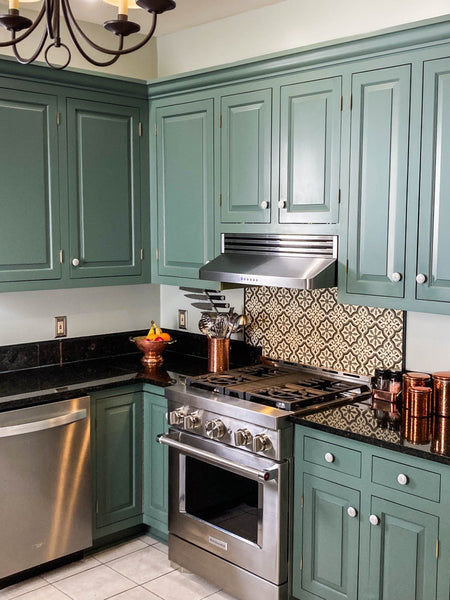Did you know that plumbing makes up roughly 15% of your home’s value? As you know, there are certain things you should be doing routinely to keep your plumbing systems in top shape.
The standard household plumbing inspection & cleaning checklist isn’t very long. You just have to focus on some key components of your plumbing system. You want to avoid costly repairs and plumbing emergencies in the long run.
Here are six important things to do as you inspect the plumbing in your home. This plumbing inspection checklist will save you time and money on home repairs and maintenance in the long run.
1. Inspect & Clean Your Drains

Don’t wait until your drains are completely clogged before taking action. Drain cleaning should be a part of your household plumbing inspection & cleaning checklist.
Be sure to inspect the drains for your sinks, bathtubs, and showers. If you notice that water drains slower than usual through the drain pipes, there could be a clog forming.
To remove the buildup in the drainpipe, you need to schedule a drain inspection.
Drain clogs will only get worse if you continue to ignore them.
Professional plumbers use video camera inspections to investigate clogs deep inside drain pipes.
Today, they use trenchless drain/sewer repair technology to unclog (underground) drains and sewers. This tech is nice because they don’t have to dig under the floor or in your yard.
Make sure you never treat your drains as a trashcan. They may appear to be handling food scraps, grease, and wipes at first.
But, over time, such habits can cause serious plumbing issues. You don’t want any unexpected emergencies.
2. Inspect & Clean the Water Heater
Most household hot water heaters are set to heat up the water up to 120 degrees Fahrenheit. Sediment collects in the heater over time, so be sure to drain it at least once a year. This will extend the life of your water heater and improve its efficiency.
This will also reduce the chance of having to file a home insurance claim if any damage occurs.
You may also need to replace the anode rod if it’s well past its useful life. Don’t forget to inspect the temperature and pressure relief valve, too.
Check if the relief valve still sits firmly where you (or your local plumber) placed it. If it appears to have shifted, or if you notice a leak, call a professional to repair it.
3. Inspect & Clean All Faucet Aerators

Once every year or two, thoroughly clean your faucet aerators to get rid of calcium buildup. The mineral buildup hardens and is difficult to remove if you continue to ignore it.
Over time, calcium buildup can reduce your home water pressure. It can also result in erratic sprays coming out of your faucets.
4. Inspect All Above-Ground Pipes for Corrosion
Be sure to check all above-ground drain pipes, main water pipes, and other plumbing fixtures for corrosion at least once a year. It’s especially important to do this after the rainy season.
If you notice greenish or bluish deposits on the pipes, you may have a pipe leak on your hands. To be safe, don’t try quick-fix solutions to get rid of rust or corrosion. Instead, contact a local plumber.
You don’t want to deal with a slab leak, a burst pipe, or any other plumbing emergency that can cause extensive damage.
You should also watch for signs of household mold around the pipes. Look in hidden, damp areas such as the crawl space, basement, etc.
If you found mold, it’s possible that you have a leak somewhere.
5. Inspect & Clean Out Gutters

Many homeowners believe cleaning out gutters doesn’t have to do with household plumbing. But, you need to check whether your gutters are correctly collecting and draining wastewater.
If you notice any clogs, call in professional gutter cleaners to unclog your gutters.
Clogged gutters can put unnecessary pressure on your sump pump and cause roof damage. They may also lead to the accumulation of excess water around your home’s foundations.
Sump pump failure due to excess pressure can result in flooding in the event of extreme rains.
Ideally, inspect and clean your gutters seasonally. But, if your area experiences severe rains, it’s always a good idea to check (after severe rain) whether your gutters need cleaning.
6. Inspect & Clean Showerheads

Clean your showerheads once a month to prevent hard water and mineral buildup. You can always use a professional-grade shower cleaner but even a quick wipe-down can help.
Turn the shower on to test if the water flows smoothly from the shower head. If so, you don’t need to detach the showerhead for deep cleaning.
Sometimes, the water flow is somewhat restricted or the mineral buildup on the showerhead is severe. In this case, detach the showerhead and clean it to resolve water pressure issues.
Showerheads made from stainless steel, chrome, or other metals with a galvanized (or protected) surface can be cleaned by rinsing them with vinegar. Use a plastic bag, a rubber band, and vinegar to deep rinse the showerhead while it’s attached to the shower arm.
We hope this plumbing inspection checklist helps you out.
Remember: don’t skip out on the annual cleanings and inspections. They will save you many headaches and expensive repair bills down the line.
Thank you to Jim and Dave from Twin Plumbing for this guest post.












